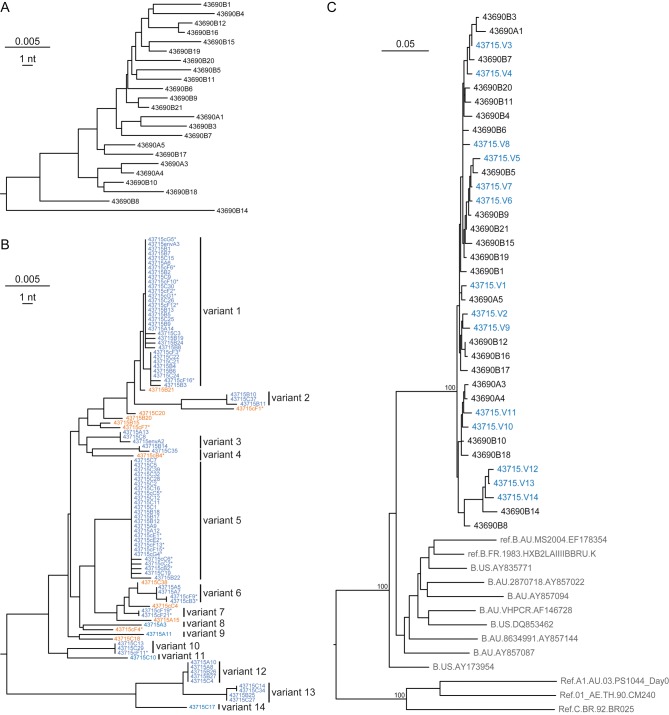Figure 1.
Neighbor-joining and maximum-likelihood phylogenies of human immunodeficiency virus type 1 (HIV) gp41 env sequences. A, Neighbor-joining phylogeny of single-genome sequencing (SGS)–derived gp41 env sequences from the chronically infected source patient's plasma viral RNA reveals unstructured wide genetic diversity typical of chronic HIV infection. B, Neighbor-joining phylogeny of SGS-derived sequences from the acutely infected index subject's plasma viral RNA and peripheral blood mononuclear cell (PBMC) DNA reveals multiple low diversity lineages typical of acute HIV infection (variants 1–14; blue), as well as interspersed interlineage recombinant sequences (orange). Sequences derived from PBMCs are indicated with asterisks. C, Maximum-likelihood phylogeny of sequences from the source patient (black) and the 14 T/F consensus genomes from the index subject (blue) interspersed within a monophyletic lineage separate from all reference sequences (gray), including subtype B sequences from Australia. Scale bars indicate nucleotide distance.

